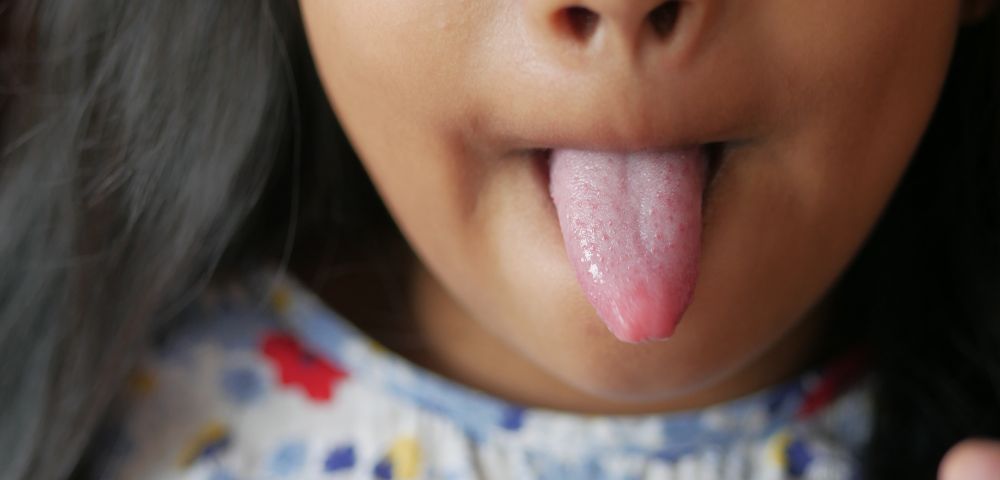As we age, our bodies naturally lose muscle mass – a process known as sarcopenia. This gradual loss of muscle mass and strength often begins in your 40s and speeds up in your 60s and 70s.
While we often associate muscle loss with weaker arms or legs, age-related muscle loss also affects a critical muscle we rely on every day: the tongue.
Your tongue plays a vital role in speech, swallowing and even nasal breathing. When tongue strength declines, each of those things becomes harder to do.
Fortunately, just as we exercise our body muscles to maintain strength, tongue exercises can help counteract the effects of ageing and keep this important muscle in good shape.
Understanding the impacts of tongue muscle loss
Loss of tongue strength can significantly impact daily life and overall health. Here’s what can happen when the tongue muscles weaken:
-
Swallowing is harder and more tiring: A weaker tongue has difficulty propelling food and liquid safely through the throat. Nearly 75% of older adults in long-term care are thought to have sarcopenic dysphagia. Those with lower tongue strength tend to eat less food but take significantly longer to complete meals, making it harder to maintain adequate nutrition.
-
Speech articulation may suffer: The tongue must make precise movements to articulate sounds correctly. A weak tongue is less able to shape sounds, which may make a person’s speech harder to understand.
- Airway stability may be compromised: A weak tongue can collapse backward, triggering an airway collapse. This contributes to sleep-disordered breathing conditions such as obstructive sleep apnoea (OSA).
Tongue exercises and muscle strength
A regular workout at the gym helps you maintain toned arms, strong legs and a nice 6-pack. In a similar way, regularly exercising your tongue can help maintain its strength and function.
So, how exactly do you exercise your tongue? You could try saying “Peter Piper picked a peck of pickled peppers” as quickly and as often as you can. Or you could try some of these tongue exercises:
-
Tongue press: Press the tongue firmly against the roof of the mouth and hold for 5 seconds. Repeat 10 times.
-
Tongue resistance push: Push your tongue against a spoon or a tongue exercise spot, applying resistance. Hold for a few seconds before relaxing.
-
Side-to-side tongue movement: Move your tongue from one corner of your mouth to the other, ensuring full extension. Repeat 10 times.
-
Tongue protrusion: Stick your tongue out as far as possible and hold for a few seconds. This strengthens tongue mobility and control.
- Suction hold: Place the tongue on the roof of the mouth and create suction. Hold for 5 seconds before releasing.
In the list above, we mentioned the Myospots tongue exercise spots. These small, tasty, spots stick easily to the roof of the mouth and dissolve slowly. Repeatedly touching your tongue to the Myospot helps to train correct tongue posture, helping to strengthen oral-facial muscles and support speech and airway function.
[shortcode id="66a83d9d5abc5f7acf2ae8e9" name="Myospots In Blueberry Flavour" layout="Single Product"]
Strengthen your tongue for better health
When you think of healthy ageing, you might imagine continuing to exercise, perhaps through a regular tennis game, aquarobics or a falls-prevention program.
But if you’re over 40, perhaps you should also consider some regular tongue exercises to help maintain your ability to speak clearly, swallow easily and breathe well.
Browse the full range of Myospots products, or if you’re ready to start training your tongue, view the range of flavoured tongue exercise spots!
Disclaimer
All information is general and not intended as a substitute for professional advice.
References
- Cleveland Clinic, Sarcopenia, https://my.clevelandclinic.org/health/diseases/23167-sarcopenia, [Accessed 25 February 2025]
- Namasivayam AM, Steele CM, Keller H. The effect of tongue strength on meal consumption in long term care. Clin Nutr. 2016 Oct;35(5):1078-83. doi: 10.1016/j.clnu.2015.08.001. Epub 2015 Aug 19. PMID: 26321499. https://pubmed.ncbi.nlm.nih.gov/26321499/, [Accessed 25 February 2025]
- Dellis S, Papadopoulou S, Krikonis K, Zigras F. Sarcopenic Dysphagia. A Narrative Review. J Frailty Sarcopenia Falls. 2018 Mar 1;3(1):1-7. doi: 10.22540/JFSF-03-001. PMID: 32300688; PMCID: PMC7155347. https://pmc.ncbi.nlm.nih.gov/articles/PMC7155347/#, [Accessed 25 February 2025]
- Kuruvilla-Dugdale M, Dietrich M, McKinley JD, Deroche C. An exploratory model of speech intelligibility for healthy aging based on phonatory and articulatory measures. J Commun Disord. 2020 Sep-Oct;87:105995. doi: 10.1016/j.jcomdis.2020.105995. Epub 2020 May 11. PMID: 32531515; PMCID: PMC7494532. https://pmc.ncbi.nlm.nih.gov/articles/PMC7494532/, [Accessed 25 February 2025]
- Very Well Health, Myofunctional Therapy Exercises May Help to Improve Sleep Apnea, https://www.verywellhealth.com/what-is-myofunctional-therapy-3015256#:, [Accessed 25 February 2025]
- Robbins, J et al (2005), The effects of lingual exercise on swallowing in older adults, Journal of the American Geriatrics Society, 53. 1483-9. https://www.researchgate.net/publication/7624504_The_Effects_of_Lingual_Exercise_on_Swallowing_in_Older_Adults, [Accessed 25 February 2025]




